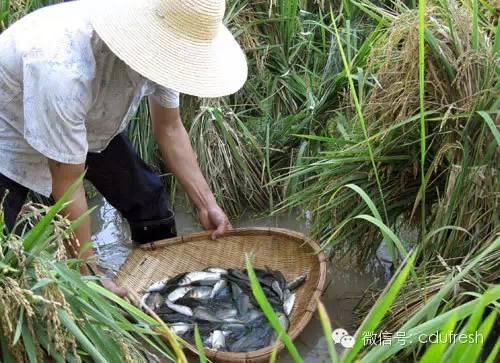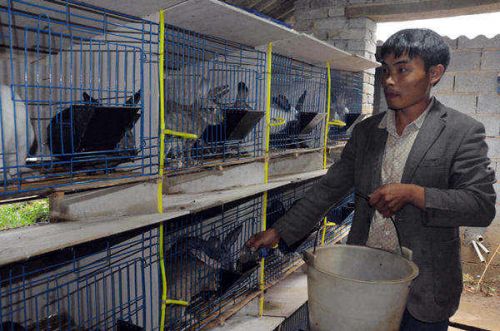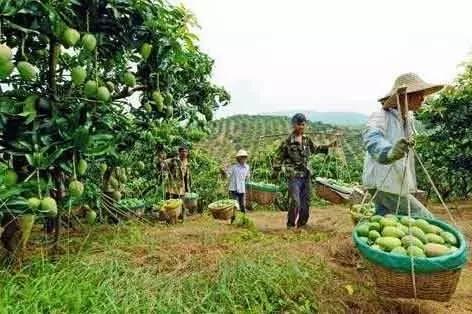The main points of the design of the most popular rice field culture model at present
Abstract
Share articles and consultations related to postharvest preservation of various agricultural products, planning and design of agricultural parks, agricultural planning and operation, so as to make the life and production of new farmers full of health and vitality.
Fish and shrimp culture in rice fields is a production mode that organically combines planting and aquaculture, so that water resources, weed resources, aquatic animal resources, insect resources and other materials and energy in rice fields can be more fully utilized by crayfish. At the same time, the life activities of fish and shrimp can play the effect of weeding, pest control, soil loosening, live water, ventilation and fattening in rice fields. "Rice-shrimp symbiosis" is a new ecological planting and breeding model which obtains the triple benefits of mutual benefit of rice and shrimp and experiential consumption under the condition of artificial management. it is especially suitable for the application of basic farmland (paddy field) in Chengdu plain and shallow hilly and gully areas in central Sichuan.
One product form
1 rural tourism products
Rural tourism product is a kind of tourism product which is attracted by the scenery and activities of rural areas and aims to meet the needs of tourists for entertainment, seeking knowledge and returning to nature.
To a large extent, the formation of rice-fish symbiosis system is due to the natural geographical conditions and closed traffic conditions of "nine mountains, half water and half divided fields", which precisely provides tourists with the opportunity to get in touch with nature, appreciate the pastoral scenery and experience the local flavor.

2 scientific research, education, tourism products
The traditional rice-fish symbiosis system is selected as the "Global important Agricultural Cultural Heritage" project, which has great scientific research value, and is also an excellent teaching material for ecological education and environmental education for tourists. The potential tourist source groups of scientific research education tourism products include researchers and enthusiasts in heritage, agriculture, aquatic products, biology and other related fields, young people who receive environmental education and so on.
3 gourmet tourism products
The traditional rice-fish symbiotic agricultural system does not use or uses less chemical fertilizers and pesticides, and can provide organic agricultural products, which provides the possibility for the development of food tourism. Relying on field fish, organic rice, wild vegetables and other raw materials, the space for the development of gourmet tourism products is very broad.
4 cultural tourism products
Culture is the soul of tourism. In tourism development, there are many examples of people making use of regional culture to create well-known brands for tourism with local characteristics, such as wooden drums in reverse row, bronze drums in Zhangao, original hunting culture in Basha, and so on.
The traditional rice-fish symbiotic agricultural culture is the regional symbol culture of the world agricultural cultural heritage, including farming culture, folk culture, overseas Chinese culture, architectural culture and so on. Relying on these cultural resources, interactive tourism products can be developed, such as allowing tourists to participate in farmland labor such as transplanting, planting and catching fish, and participate in fish lantern dance performances.
II. Pattern design
Continuous cropping of rice and shrimp: a crop of crayfish is raised after planting a mid-season rice variety in the paddy field, 20 kg / mu of crayfish is put into irrigation immediately after the rice harvest, and all the shrimp are harvested before transplanting rice seedlings in May of the following year. This model can produce about 100 kg of crayfish per mu without affecting the yield of rice.
Rice and shrimp symbiosis: early, middle and late rice lodging resistant varieties can be selected, only one season of rice can be planted, and no-tillage seedling throwing method should be used when transplanting seedlings. Rice-shrimp symbiosis can increase rice yield by 5% Mel 10%. Planting shrimp 20kg / mu in August-September or 30kg / mu in March-April can increase crayfish yield by about 50kg / mu during the rice growing period.
Rice-shrimp rotation: use the water body of the paddy field to grow one-season rice, raise crayfish after the rice is harvested, do not plant rice in the second year, and then plant one-season rice in the third year, every three years. After the rice was harvested in September, the crayfish were immediately irrigated and planted in 25 kg / mu. The crayfish were harvested before June of the third year, and the rice was planted again by means of no-tillage and throwing seedlings. This model is suitable for the production of large-scale high-quality commercial shrimp, which can produce crayfish 230-250 kg / mu.
Three key points of project design
1. The ridge is 0.5-0.7m high and 0.5m wide. The base of the ridge is widened by 1.0m-1.5m, and the slope ratio is 1:2-1:3.
2. Dig a circular shrimp culture ditch with a width of 2-4 meters and a depth of about 1 meters within 1 m from the ridge of the field. The circular shrimp ditch accounts for about 10% of the rice field.
3. The anti-escape wall is built around the field ridge with plastic net, the lower part is embedded in the soil 10~20cm, the upper part is 0.5mm higher than the field ridge, and the upper part is supported and fixed with wooden piles or bamboo poles every 1.5m. The calcium plastic board with a width of about 30cm on the inner seam of the upper part of the mesh is hung upside down to prevent the lobster from escaping.
4. The inlet and outlet of the rice field should be chosen on the soil ridge opposite to the two corners of the rice field, and the inlet and outlet should be surrounded by steel wire mesh or iron fence.
Business expansion (types of aquatic products)
Practice has proved that the selection of breeding varieties is the key to the success or failure of rice cultivation and economic benefits, and breeders must be based on comprehensive factors such as geographical location, facility conditions, market situation, economic strength, seedling sources and technical level, in order to achieve the goal of promoting the high yield, high efficiency and sustainable development of rice cultivation and aquatic animal culture.
So, what are the suitable species of aquatic animals for farming in rice fields?
- Prev

"Rabbit King" in Mantis Village, Dashan Town, Panxian County, Guizhou Province
"Rabbit King" in Mantis Village, Dashan Town, Panxian County, Guizhou Province
- Next

Baise mango is about to appear on the market, with the help of the government, and the fragrance of the fruit is floating around the world.
Baise mango is about to appear on the market, with the help of the government, and the fragrance of the fruit is floating around the world.
Related
- A course of planting techniques and methods on how to grow carrots
- How to plant the latest tulips?
- Is it better to pick tea in the morning or in the afternoon? When is the best time for tea to be picked? what is the third or fifth tea?
- Launch Yuanxiao Happy combination Haocha + Tea Yuan healthy Taste
- Penghu Tourism "Fireworks 20 Parade with You"
- 2022 West Lake Happiness holds "Digital Revitalization Voucher" and draws iphone13 and laptop.
- Banqiao Fuzhou social houses are designed to change start-up combined with police elimination to create a safe and livable environment
- The convenient measure of "mechanical weeding" in Xinbei has been abused and the Agriculture Bureau has imposed heavy penalties on the illegal land consolidation.
- Changgeng University Joins Hands with Four Memory Factories to Rescue Memory Talent Shortage
- The list of Taiwan's top 100 MVP managers is listed by the Director-General of the Farmers' Association of Sanxia District.

